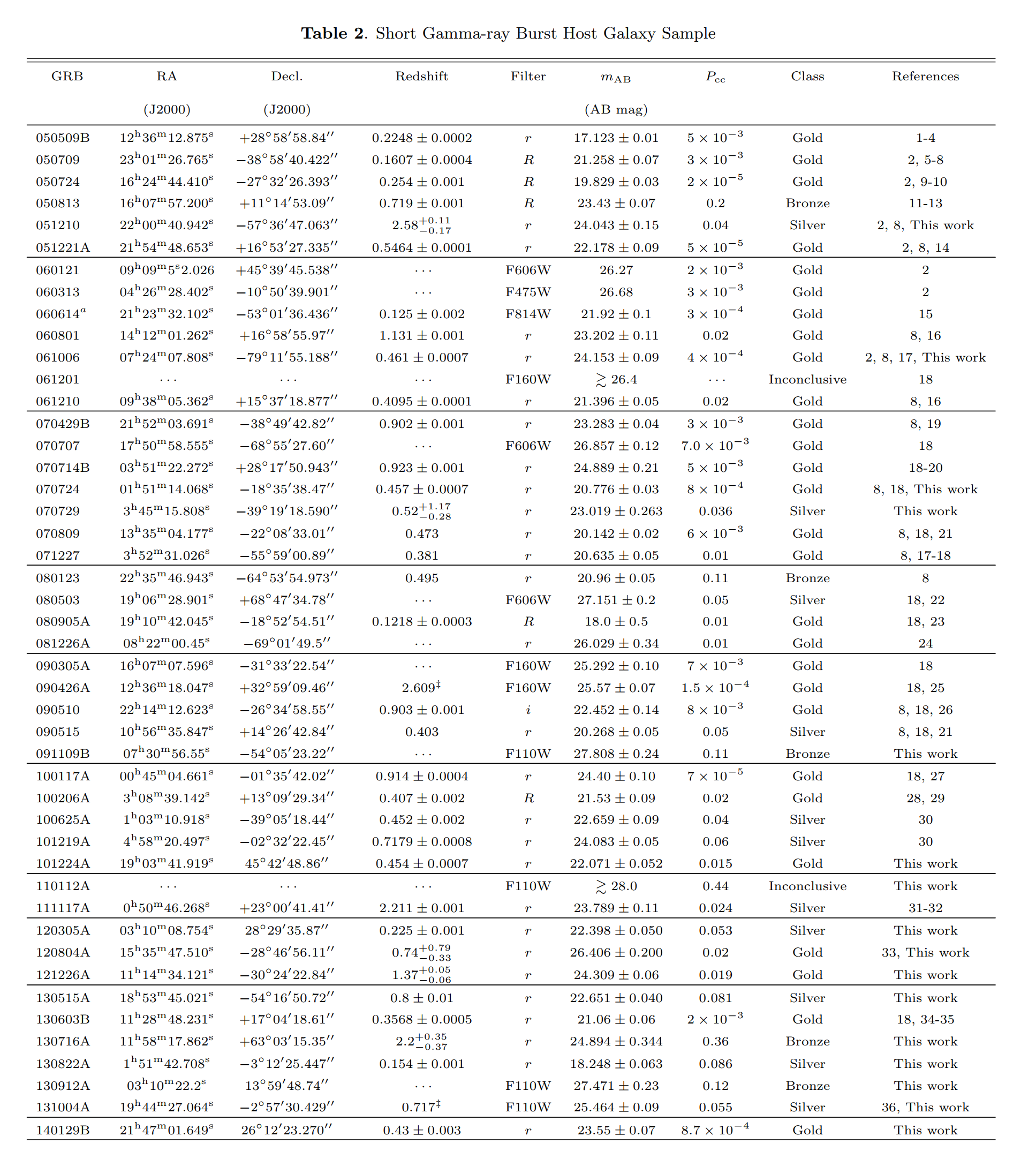两篇短暴宿主星系的文章
We present a comprehensive optical and near-infrared census of the fields of 90 short gamma-ray bursts (GRBs) discovered in 2005-2021, constituting all short GRBs for which host galaxy associations are feasible (
We present the stellar population properties of 68 short gamma-ray burst (GRB) host galaxies, representing the largest uniformly-modeled sample to date. Using the Prospector stellar population inference code, we jointly fit the photometry and/or spectroscopy of each host galaxy. We find a population median redshift of






附件列表



